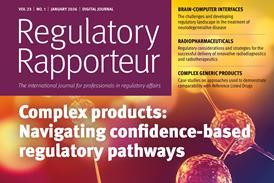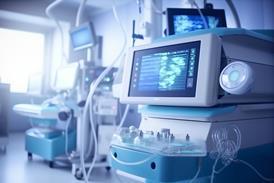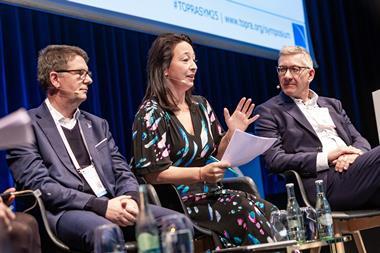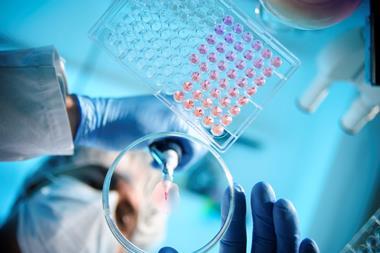Gene therapies have the potential to revolutionise the global healthcare system. Some of these products may offer curative benefits to patients with devastating conditions. This continuing professional development (CPD) supplement provides an overview of the regulatory framework for the development of gene therapy products in key markets.
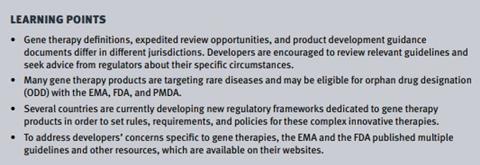
According to recent data from the Alliance for Regenerative Medicine (ARM), there are more than 980 companies globally that are active in the development of gene therapies.[1] The landscape is expanding rapidly and, as of the end of 2019, gene therapy products are used in 1,066 ongoing clinical trials, 94 of which are Phase III trials.[1]Gene therapies have the potential to offer durable and curative, or near-curative, benefits to patients who suffer from devastating diseases; they also face unique development challenges and might need specific requirements for the quality, safety and efficacy data necessary to support a favourable benefit–risk profile. The definition of gene therapy products differs slightly dependent on jurisdictions (see Table 1).[2] This continuing professional development article provides an overview of global regulatory frameworks for the development of this class of complex and innovative therapies.
EU regulatory framework
The European Medicines Agency (EMA) regulates gene therapies as advanced therapy medicinal products (ATMPs) under Regulation (EC) No 1394/2007[3] and Directive 2009/120/EC[4], which replaces Part IV of Annex I to Directive 2001/83/EC. The ATMP Regulation outlines the principles for the authorisation, supervision, and pharmacovigilance of ATMPs; established the Committee for Advanced Therapies (CAT); and specifies financial and procedural incentives to assist in the development of ATMPs. This regulation specifies that marketing authorisation applications (MAAs) for gene therapies, as well as other ATMPs, must be evaluated under the centralised procedure.[3] The CAT assesses MAAs of gene therapy products and prepares a draft opinion on their quality, safety, and efficacy, which is then provided to the Committee for Medicinal Products for Human Use (CHMP) for review. The CHMP is tasked with generating a final scientific opinion. The final opinion is then transmitted to the European Commission, which, on its adoption, issues the marketing authorisation (MA).[5]
Directive 2009/120/EC recognises the development challenges and creates a risk-based approach for evaluating MAAs for ATMPs. This approach, which is optional, is used to determine the extent of quality, nonclinical, and clinical data to be included in the MAA and to justify any deviation from the requirements of Directive 2001/83/EC. Guidance on the implementation of this approach is provided in “Risk-based approach according to Annex I, part IV of Directive 2001/83/EC applied to advanced therapy medicinal products”, and involves a four-step methodology aiming to integrate information systematically.[6] Table 2 highlights the EMA guidance documents which are of relevance to ATMPs.
Many gene therapy products are targeting rare diseases, and their developers are encouraged to consider applying for an orphan drug designation (ODD). Products with an ODD receive numerous benefits including protocol assistance, a reduction in some procedural fees and, upon MAA approval, ten years of market exclusivity for the protected indication.[7] For further details refer to a previous CPD supplement on ODDs (Regulatory Rapporteur October 2017).
There are multiple pathways to expedite development and approval of gene therapies in the EU, although it should be noted that there are no pathways specifically designed for ATMPs. For further details please refer to the CPD supplement on expedited pathways (Regulatory Rapporteur September 2020).
Micro-, small and medium-sized enterprises (SMEs) that are developing gene therapies might consider the ATMP certification procedure. This 90-days procedure, which is operated by the CAT, allows SMEs to submit either quality data alone or in conjunction with nonclinical data for scientific review. The CAT evaluates whether the data are on track to meet the standards of a future MAA. After the assessment, the CAT may recommend the granting of a certificate, which is then issued by the EMA. The EMA website provides details on the process and on how to apply.[8]
| Jurisdiction | Name | Gene therapy definition |
|---|---|---|
| EMA (EU) | Gene therapy medicinal product (GTMP) |
“A biological medicinal product (excluding vaccines) that: (a) Contains an active substance which contains or consists of a recombinant nucleic acid used in or administered to human beings with a view to regulating, repairing, replacing, adding or deleting a genetic sequence and; (b) Its therapeutic, prophylactic or diagnostic effect relates directly to the recombinant nucleic acid sequence it contains, or to the product of genetic expression of this sequence. Gene therapy medicinal products shall not include vaccines against infectious diseases.” Directive 2001/83/EC, Annex I, Part IV, as amended in Directive 107 2009/120/EC |
| FDA (USA) | Gene therapy product |
“Gene therapy is a medical intervention based on modification of the genetic material of living cells. Cells may be modified ex vivo for subsequent administration to humans, or may be altered in vivo by gene therapy given directly to the subject. When the genetic manipulation is performed ex vivo on cells which are then administered to the patient, this is also a form of somatic cell therapy. The genetic manipulation may be intended to have a therapeutic or prophylactic effect, or may provide a way of marking cells for later identification. Recombinant DNA materials used to transfer genetic material for such therapy are considered components of gene therapy and as such are subject to regulatory oversight.” FDA. Guidance for Industry: Guidance for Human Somatic Cell Therapy and Gene Therapy. March 1998 |
| MHLW (Japan) | Gene therapy product |
“The term ‘regenerative medicinal products’ (as ‘SAISEI-IRYOUTOU-SEIHIN’ in Japanese) used in this act refers to the articles (excluding quasi-drugs and cosmetics) specified in the following items which are specified by the cabinet order. […] (2) The articles which are intended to be used in the treatment of disease in humans or animals, and are transgened to express in human or animal cells.” Act on Pharmaceutical and Medical Devices, Chapter 1 Article 2–9 |
Table adapted from Halioua-Haubold et al, “Regulatory considerations for gene therapy products in the US, EU, and Japan”.[2]
US regulatory framework
In the US, the Federal Food, Drug, and Cosmetic Act (FDCA) and the Public Health Services Act (PHSA) give the FDA the legal authority to regulate medicinal products. Biologic license applications (BLAs) for gene therapy products are reviewed by the Office of Tissues and Advanced Therapies (OTAT), a division in the Center for Biologics Evaluation and Research (CBER).[9] The contents and structure of a gene therapy investigational new drug (IND) submission is the same as any other investigational biological product,10 which are regulated under Section 351 of the Public Health Services Act[11], [12]
In January 2020, the FDA released six final guidances for industry on manufacturing, long-term follow-up, and clinical development of gene therapy products.[13] [14] [15] [16] [17] [18]These guidances, in conjunction with several other existing guidances for gene therapy development (see Table 2), offer many insights to the FDA’s current thinking in this area and provide great resources to sponsors.[10]
Similarly to the EU, the ODD in the US offers sponsors incentives, including tax credits for qualifying clinical testing, waiver of application fees, and seven years of market exclusivity.[19],[20] In January 2020, the FDA also issued a new draft guidance titled “Interpreting sameness of gene therapy products under the orphan drug regulations”.[21] According to the Code of Federal Regulations, an ODD request may be submitted for a drug that is the “same drug” of an already approved product for a rare disease or condition. Under this circumstance, the sponsor would be required to present a plausible hypothesis as to why the “same drug” was clinically superior.[22] [23] [24]
The current regulations did not specify how the “same drug” definition relates to gene therapy products, thus the draft guidance clarifies the definition of sameness in the context of gene therapies for granting ODD and eligibility for orphan drug exclusivity. Gene therapy products for the same indication of a previously approved drug may be considered different drugs in the context of ODD. The transgenes and vectors must be taken into consideration when determining the sameness of gene therapy products.
Gene therapies that address an unmet medical and are intended to treat, modify, reverse, or cure a serious or life-threatening condition may be eligible for five distinct expedited programmes that the FDA offers (fast-track, accelerated approval, priority review, breakthrough therapy and regenerative medicine advanced therapy [RMAT]). A product may receive more than one designation, though an application should be submitted for each. For further details please refer to the CPD supplement on expedited pathways (Regulatory Rapporteur September 2020).
Japan’s regulatory framework
In Japan, the Ministry of Health, Labour, and Welfare (MHLW) categorises and regulates gene therapy products as regenerative medical products (RMPs).[25] The legal framework used for these products is the Act on Securing Quality, Efficacy and Safety of Products Including Pharmaceuticals and Medical Devices (also known as the PMD Act).[26],[27] The Pharmaceutical and Medical Devices Agency (PMDA) is responsible for evaluating RMPs both for clinical trial usage and for marketing authorisations.[28] ,[29] In the context of the Japanese regulatory framework, it is important to distinguish between RMPs and regenerative medicines, which is a separate category that is exempt from market approval. The Act on the Safety of Regenerative Medicines (ASRM) regulates the use of regenerative medicines in the course of clinical practice or as part of clinical research not conducted to support registration.[30]
Japan regulates the risks associated with the use and release of living modified organisms (LMOs) in accordance with the Cartagena Protocol.[31] Under the Cartagena Act, any organism with inserted, extracellularly processed nucleic acid is regarded as an LMO and is subject to the regulations of the Act.[32] The MHLW in conjunction with the Ministry of the Environment review applications submitted by technology users which outlines the details of production and any knowledge of potential impacts on biodiversity. These applications must be approved prior to the use of gene therapy products in Japan, along with any other clinical trial approval requirements.[33]
As with all other types of products, gene therapy Japanese marketing applications are reviewed by the PMDA, which performs a scientific review and prepares a review report in consultation with external experts. The MHLW performs its own review, including further consultation with different external experts, and is then responsible for approving the marketing authorisation.[34],[35]
Similarly to the EU and the US, the PMDA provides a priority consultation system for ODD products.[36] Products also qualify for an extended reexamination period of ten years, compared to seven years for non-ODD products. The target review time for MAAs is nine months. Subsidies and preferential tax treatment are also available.[37]
However, unlike the US and EU, the Japanese expedited framework does not specify requirements for diseases’ severity or the patient population, nor makes comparisons with existing treatments.[38] In Japan, particular attention has been given to the SAKIGAKE, or “pioneer” designation system. SAKIGAKE designation provides substantial benefits, including appointment of a PMDA manager or “concierge”, substantial preapplication consultation, prioritised consultation, and prioritised review timeline with a total target time of six months.[39] Products must be expected to demonstrate prominent effectiveness in a serious disease, and a marketing authorisation must be submitted in Japan first or simultaneously with other first MAAs in other jurisdictions.[40]
For more information on SAKIGAKE designation, see Regulatory Rapporteur February 2019. Under the PMD Act, regenerative medicine products also may qualify for conditional and time-limited approval. Under this conditional approval, a product is authorised for a certain amount of time if safety has been confirmed in Phase I or Phase II trials and efficacy can be assumed from the same trials. Efficacy must be demonstrated in confirmatory trials to be conducted while the product is conditionally approved and an application for full approval submitted in a pre-specified time period not longer than seven years.[40],[41]
Other countries
Several countries are currently working on establishing regulatory frameworks for gene therapies, with two key examples being Canada and Brazil. Currently, Health Canada does not have specific regulations dedicated to gene therapy products, and these products are regulated as drugs under the Food and Drug Regulations in Canada. However, Health Canada is proposing the creation of a new, flexible regulatory pathway commonly called the Regulatory Sandbox. This framework would allow for creating custom criteria for the authorisation of individual advanced therapy products. On further evaluation, longer term regulations and policies may be established after an assessment of the benefits and limitations of the regulatory sandbox is performed. Brazil’s National Health Surveillance Agency (ANVISA), similarly to other jurisdictions, also classifies gene therapy products as ATMPs. ANVISA recognised the challenges in regulating gene and cell therapies and created a committee of experts called the Chamber for Advanced Cell Therapy (CAT).[42] This committee advises ANVISA in regulations for cell and gene therapies, regulation of ATMP clinical trials, and also supports the agency in the review of ATMP products[43].,[44]
TABLE 2 Key gene therapy guidances for EMA and FDA
| Agency | Key guidance documents |
|---|---|
| FDA |
• Interpreting sameness of gene therapy products under the Orphan Drug Regulations; draft Guidance for industry – January 2020 • Chemistry, manufacturing, and controls (CMC) information for human gene therapy investigational new drug applications (INDs); guidance for industry – January 2020 • Long-term follow-up after administration of human gene therapy products; guidance for industry – January 2020 • Testing of retroviral vector-based human gene therapy products for replication competent retrovirus during product manufacture and patient follow-up; guidance for industry – January 2020 • Human gene therapy for hemophilia; guidance for industry – January 2020 • Human gene therapy for rare diseases; guidance for industry – January 2020 • Human gene therapy for retinal disorders; guidance for industry – January 2020 • Evaluation of devices used with regenerative medicine advanced therapies; guidance for industry – February 2019 • Expedited programs for regenerative medicine therapies for serious conditions; guidance for industry – February 2019 • Recommendations for microbial vectors used for gene therapy; guidance for industry – September 2016 • Design and analysis of shedding studies for virus or bacteria-based gene therapy and oncolytic products; guidance for industry – August 2015 • Considerations for the design of early-phase clinical trials of cellular and gene therapy products; guidance for industry – June 2015 • Determining the need for and content of environmental assessments for gene therapies, vectored vaccines, and related recombinant viral or microbial products; guidance for industry – March 2015 • Guidance for industry: preclinical assessment of investigational cellular and gene therapy products – November 2013 • Guidance for industry: potency tests for cellular and gene therapy products – January 2011 • Guidance for industry: guidance for human somatic cell therapy and gene therapy – March 1998 |
| EMA |
• Development and manufacture of lentiviral vectors – May 2005 • Non-clinical testing for inadvertent germline transmission of gene transfer vectors – May 2007 • Non-clinical studies required before first clinical use of gene therapy medicinal products – May 2008 • Scientific requirements for the environmental risk assessment of gene-therapy medicinal products – May 2008 • Guideline on safety and efficacy follow-up and risk management of advanced therapy medicinal products – January 2009 • Follow-up of patients administered with gene therapy medicinal products – May 2010 • Quality, non-clinical and clinical aspects of medicinal products containing genetically modified cells – May 2012 • Risk-based approach according to Annex I, part IV of Directive 2001/83/EC applied to advanced therapy medicinal products – February 2013 • Quality, preclinical and clinical aspects of gene therapy medicinal products – July 2018 • Guideline on quality, non-clinical and clinical requirements for investigational advanced therapy medicinal products in clinical trials – January 2019 |
Conclusions
The development of new gene therapy products is a rapidly growing sector, as evidenced by the scientific, clinical and financial advancements of recent years. It is strengthened by a solid stakeholder support from not only industry experts, but regulators, lawmakers, providers, and patient advocates. Many patients are poised to benefit from these new complex and innovative therapies in the coming decades. The work of regulatory affairs professionals will be vital while we contribute to continue building the infrastructures necessary to develop and deliver them.
[1] Lambert JL. State of the industry: the financial, clinical, and scientific landscape for cell and gene therapies. Cell & Gene Therapy Insights. 2020;6(1):47–54.
[2] Halioua-Haubold, Peyer JG, Smith J et al. Regulatory considerations for gene therapy products in the US, EU, and Japan. Yale Journal of Biology and Medicine2017;90:683–693
[3] Regulation (EC) No 1394/2007 on advanced therapy medicinal products and amending Directive 2001/83/EC and Regulation (EC) No 726/2004. Official Journal L324 p121–137. Available at: https://eur-lex.europa.eu/LexUriServ/LexUriServ.do?uri=OJ:L:2007:324:0121:0137:en:PDF (accessed 21 May 2020)
[4] Commission Directive 2009/120/EC of 14 September 2009 amending Directive 2001/83/EC of the European Parliament and of the Council on the Community code relating to medicinal products for human use as regards advanced therapy medicinal products; Official Journal L242 p3–12. Available at: https:// ec.europa.eu/health/sites/health/files/files/eudralex/vol-1/ dir_2009_120/dir_2009_120_en.pdf (accessed 21 May 2020)
[5] Detela G, Lodge A. EU Regulatory pathways for ATMPs: standard, accelerated and adaptive pathways to marketing authorisation. Molecular Therapy: Methods & Clinical Development. 2019;13:205-232
[6] EMA. Guideline on the risk-based approach according to Annex I, part IV of Directive 2001/83/EC applied to Advanced Therapy Medicinal Products. 2013. Available at: www.ema.europa.eu/ docs/en_GB/document_library/Scientific_guideline/2013/03/ WC500139748.pdf (accessed 21 May 2020).
[7] EMA. European Medicines Agency: orphan incentives. Available at: www.ema.europa.eu/en/human-regulatory/researchdevelopment/orphan-designation/orphan-incentives (accessed 25 March 2020).
[8] Certification procedures for micro-, small- and medium-sized enterprises (SMEs). Available at: www.ema.europa.eu/en/ human-regulatory/research-development/advanced-therapies/ advanced-therapy-development/certification-procedures-microsmall-medium-sized-enterprises-smes (accessed 21 May 2020).
[9] FDA. CBER Product Jurisdiction. Available at: www.fda.gov/ about-fda/center-biologics-evaluation-and-research-cber/cberproduct-jurisdiction (accessed 21 May 2020).
[10] FDA. Guidance for human somatic cell therapy and gene therapy, guidance for industry. FDA. 1998. Available at: www.fda.gov/ media/72402/download (accessed 21 May 2020).
[11] 42 U.S.C § 262 (2010).
[12] FDA. Frequently asked questions about therapeutic biological products. Available at: https://www.fda.gov/drugs/therapeuticbiologics-applications-bla/frequently-asked-questions-abouttherapeutic-biological-products (accessed 21 May 2020).
[13] . FDA. Chemistry, manufacturing, and control (CMC) information for human gene therapy investigational new drug applications (INDs); guidance for industry. 2020. Available at: www.fda.gov/ media/113760/download (accessed 21 May 2020).
[14] . FDA. Long term follow-up after administration of human gene therapy products; guidance for industry. 2020. Available at: www. fda.gov/media/113768/download (accessed 21 May 2020).
[15] FDA. Testing of retroviral vector-based human gene therapy products for replication competent retrovirus during product manufacture and patient follow-up; guidance for industry. 2020. Available at: www.fda.gov/media/113790/download (accessed 21 May 2020).
[16] FDA. Human gene therapy for hemophilia; guidance for industry. 2020. Available at: www.fda.gov/media/113799/download (accessed 21 May 2020).
[17] FDA. Human gene therapy for rare diseases; guidance for industry. 2020. Available at: www.fda.gov/media/113807/ download (accessed 21 May 2020).
[18] Human gene therapy for retinal disorders; guidance for industry. 2020. Available at: www.fda.gov/media/124641/download (accessed 21 May 2020).
[19] 21 U.S.C. § 379 (2010).
[20] . FDA. Prescription Drug User Fee Act waivers, reductions, and refunds for drug and biological products guidance for industry. 2019. Available at: www.fda.gov/media/131797/download (accessed 21 May 2020).
[21] . FDA. Interpreting sameness of gene therapy products under the orphan drug regulations. Available at: www.fda.gov/ media/134731/download (accessed 21 May 2020).
[22] 21 C.F.R. § 316.20 (2016).
[23] Hong P, Sarpatwari A, Kesselheim AS. Orphan drug designation and exclusivity for “same drugs”. The Journal of Law, Medicine & Ethics. 2019;47(2):34–-349.
[24] 21 U.S.C. § 360cc (2010).
[25] Act on Securing Quality, Efficacy and Safety of Products Including Pharmaceuticals and Medical Devices], Act No. 145 of August 10, 1960, as last amended by Act No. 50 of 2015; Translation from the Japanese Law Translation Database System, Ministry of Justice. Available at: www.japaneselawtranslation.go.jp/law/detail/?ft=1&re=02&dn= 1&x=34&y=14&co=01&ia=03&ja=04&ky=the+law+on+securing+ quality%2C+efficacy+and+safety+of+products+including+ pharmaceuticals+medical+devices&page=1 (accessed 21 May 2020).
[26] Asahara H. Global focus: Japan’s regenerative medicine regulatory pathways: encouraging innovation and patient access. Food and Drug Law Institute. March 2019. Available at: www.fdli.org/2019/02/ global-focus-japans-regenerative-medicine-regulatory-pathwaysencouraging-innovation-and-patient-access/ (accessed 21 May 2020)
[27] Hara A, Sato D, Sahara Y. New governmental regulatory system for stem cell-based therapies in Japan. Ther Innov Regul Sci. 2014;48:681–688
[28] Pmda.go.jp. PMDA: outline of reviews and related services. Available at: www.pmda.go.jp/english/review-services/outline/0001.html (accessed 25 March 2020).
[29] Sato D. Updates on global movement in regulation of advanced therapeutics [PowerPoint presentation]. Available at: www.pmda. go.jp/files/000209780.pdf (accessed 25 March 2020)
[30] Institutional framework for promoting the future implementation of regenerative medicine [Powerpoint presentation]. Available at: www. mhlw.go.jp/english/policy/health-medical/medical-care/dl/150407- 01.pdf (accessed 25 March 2020).
[31] biodic.go.jp. Ministry of the Environment: biosafety regulations in Japan. Available at: www.biodic.go.jp/bch/english/cartagena/index. html (accessed 25 March 2020).
[32] Act on the Conservation and Sustainable Use of Biological Diversity through Regulations on the Use of Living Modified Organisms (Act No. 97 of 2003). Available at: www.env.go.jp/en/laws/nature/ act_csubdrlmo.pdf (accessed 21 May 2020).
[33] Tsuda M, Watanabe KN, Ohsawa R. Regulatory status of genomeedited organisms under the Japanese Cartagena Act. Front. Bioeng. Biotechnol. 2019;7:387.
[34] pmda.go.jp. Pharmaceutical and Medical Devices Agency: drugs review. Available at: www.pmda.go.jp/english/review-services/ reviews/0001.html (accessed 25 March 2020).
[35] Sumimasa N, Ozawa K. New Japanese regulatory frameworks for clinical research and marketing authorisation of gene therapy and cellular therapy products. Current Gene Therapy, 2017;17(1):17–28.
[36] Mhlw.go.jp. Ministry of Health, Labor and Welfare. Overview of orphan drug/medical device designation system. Available at: www.mhlw.go.jp/english/policy/health-medical/pharmaceuticals/ orphan_drug.html (accessed 21 May 2020).
[37] Regulatory updates in Japan [PowerPoint Presentation]. Available at: www.pmda.go.jp/files/000226208.pdf (accessed 21 May 2020).
[38] Jokura Y, Yano K, Yamato M. Comparison of the new Japanese legislation for expedited approval of regenerative medicine products with the existing systems in the USA and European Union. Journal of tissue engineering and regenerative medicine. 2018;12(2):e1056–e1062
[39] Strategy of SAKIGAKE. Available at: www.mhlw.go.jp/english/policy/ health-medical/pharmaceuticals/dl/140729-01-01.pdf (accessed 21 May 2020).
[40] Regulatory update from MHLW/PMDA [PowerPoint presentation]. Available at: www.pmda.go.jp/files/000221880.pdf (accessed 25 March 2020)
[41] Kenji K. Regulatory frameworks of regenerative medicines and products review in Japan [PowerPoint presentation]. Available at: www.pmda. go.jp/files/000226121.pdf (accessed 25 March 2020).
[42] ANVISA. Ordinance 1700 of December 12, 2012
[43] ANVISA. Ordinance 1731 of September 9, 2016.
[44] Galli MC, Serabian M, editors. Regulatory aspects of gene therapy and cell therapy products. 1st ed. New York: Springer International Publishing; 2015.


